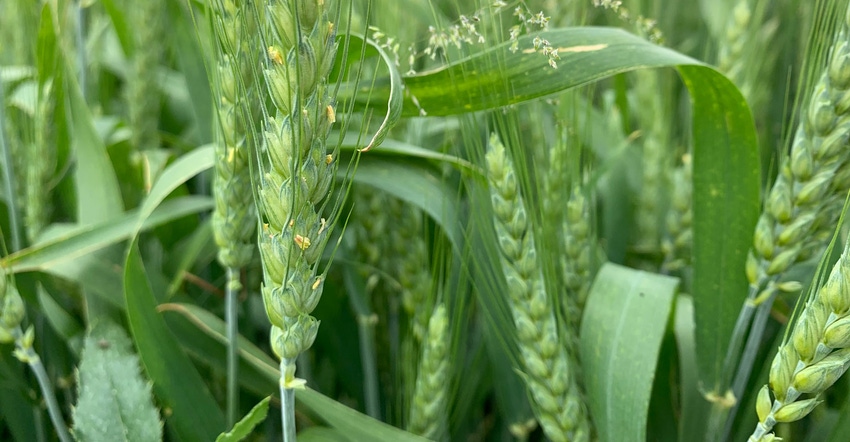
More than half of Pennsylvania’s wheat is heading, so it’s safe to say that most of those growers have likely already applied fungicide to prevent fusarium head blight, or scab, or grow a variety that has some scab resistance.
For everyone else, if you’re in an area where heading will happen in the next week, keep an eye out for the weather and get your spray ready to go.
“Fusarium head blight risk is patchy across the commonwealth but increasing with these warm and wet conditions,” says Alyssa Collins, Penn State plant pathologist. “Growers should be prepared to spray any wheat that is heading as soon as the anthers start emerging.”
Fusarium head blight development relies on timing and the right weather to take off. Flowering, which happens around three to five days after heading, is the prime time for the fungus to develop. High humidity — at least 85% humidity — and temperatures between 68 and 75 degrees F are ideal for development.
The online Fusarium Risk Tool puts much of southeast and western Pennsylvania; central and southern New Jersey; most of Maryland; Delaware; parts of southern New York; and coastal areas of New England at “high risk” for scab development for “susceptible” spring and winter wheat varieties.

Rain can also be an issue because it can splash spores onto vulnerable wheat or barley heads.
Read more online about sprays to use and how to test for DON (vomitoxin).
About the Author(s)
You May Also Like






